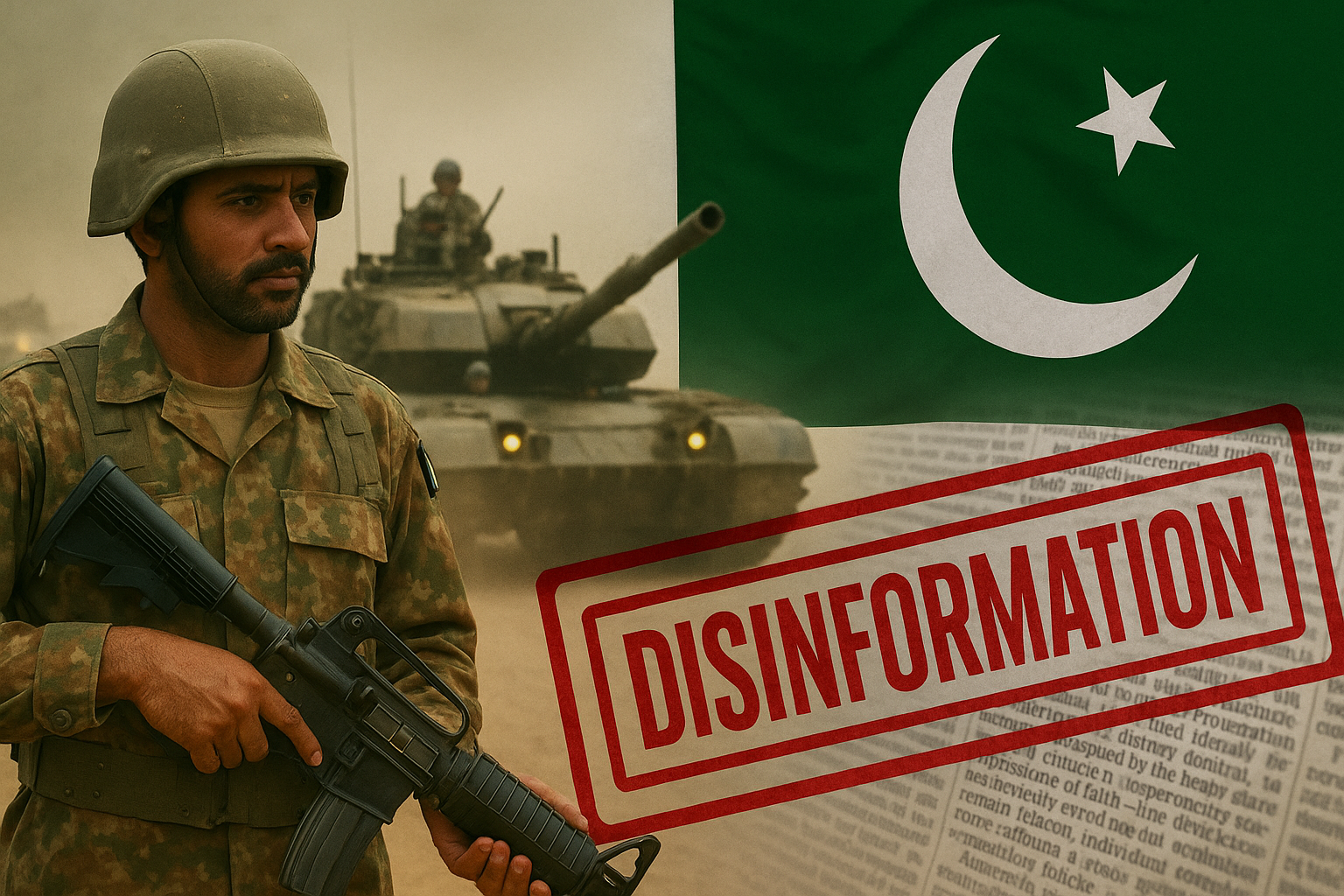In May this year, India and Pakistan engaged in a brief but intense military confrontation, codenamed Operation Sindoor, following the terrorist attack on tourists in the valley of Pahalgam, Jammu & Kashmir. During the same time, the digital sphere was also engulfed by a surge of misleading information and fake narratives spread by Pakistan against the Indian armed forces.
What began as a targeted military operation by the Indian Armed Forces has quickly devolved into a chaotic online propaganda war, largely fueled by pro-Pakistan social media accounts and influential political figures deliberately spreading fake news.
Pakistan’s state-affiliated accounts resorted to recycling outdated images, misrepresenting old videos, and pushing baseless claims. One of the most prominent examples is a viral image falsely claiming that the Pakistan Army had shot down an Indian Rafale jet near Bahawalpur. The image was debunked by the Press Information Bureau (PIB) Fact Check, which confirmed that it was actually from a MiG-21 crash in Moga, Punjab, in 2021 — an entirely unrelated event to current affairs.
Another example involved a video that falsely asserted Indian troops surrendered at Chora Post. Pakistan’s Minister Attaullah Tarar amplified this narrative by endorsing the claim without providing evidence, thereby spreading a narrative lacking a factual basis. In another misleading post, a video was circulated with the claim that the Pakistan Air Force targeted the Srinagar airbase. The footage actually originated from sectarian clashes in Pakistan’s Khyber Pakhtunkhwa earlier in 2024 and bore no connection to any military activity in Kashmir.
Numerous images and clips shared on Pakistani social media handles – primarily Facebook and ‘X’ in the wake of the operation were later identified as either digitally altered from unrelated past events or archival footage being repurposed to create a false sense of retaliation. Despite the clear absence of substantiation, these fabricated narratives were amplified by several mainstream media outlets in Pakistan, indicating a coordinated attempt to control the post-operation discourse and project a retaliatory posture.
Pakistan’s Defence Minister Khawaja Asif also made a baseless claim that Indian soldiers were captured following Pakistan’s response to Wednesday’s military strikes, but he backtracked later. No Indian personnel were taken prisoner during the operation.
This was not the only incident of Asif’s delusions. Appearing in a CNN interview, he claimed that five Indian fighter jets had been shot down by Pakistani forces, citing social media as his only source of evidence. “It’s all over social media, on Indian social media, not ours,” he said. “The debris of these jets fell into Kashmir. It’s all over Indian media today, and they have admitted it.”
Recycled and AI-generated footage purportedly showing Pakistani military victories was shared widely on social media and then amplified by both the mainstream media, respected journalists, and government ministers to make fake claims such as the capture of an Indian pilot, a coup in the Indian army, and Pakistani strikes wiping out India’s defences.
There were also widely circulated fake reports that a Pakistani cyber-attack had wiped out most of the Indian power grid and that Indian soldiers had raised a white flag in surrender. In particular, video game simulations proved to be a popular tool in spreading disinformation about Pakistan, “delivering justice” against India.
These incidents reflect a broader campaign by Pakistan to mislead the foreign press and undermine the credibility of India’s Operation Sindoor. By flooding social media with manipulated media and fabricated claims, Islamabad seems to be focusing not on battlefield outcomes but on shaping the surrounding narrative to project the impression of a strong response.
The strategy aimed to divert attention from the effectiveness of India’s actions, while simultaneously trying to influence both domestic sentiment and international opinion through false portrayals of battlefield developments.
However, Pakistanis were exposed in real-time by the alert Centre. The central government fact-checked several Pakistani news outlets on Operation. The Press Information Bureau’s (PIB) fact-check unit has cautioned against “dubious content” being circulated on social media and termed it “Pakistan-sponsored propaganda.”
The PIB Fact Check division posted a statement on the X platform: “In a video shared by several pro-Pakistan handles, it is being falsely claimed that the Pakistan Air Force has targeted Srinagar airbase. The video shared is old and NOT from India. The video is from sectarian clashes that took place in the year 2024 in Khyber Pakhtunkhwa, Pakistan. Rely only on official Government of India sources for authentic information.”
In another post, the PIB Fact Check said, “Social media posts falsely claim that Pakistan destroyed Indian Brigade Headquarters. This claim is FAKE. Please avoid sharing unverified information and rely only on official sources from the Government of India for accurate information.”
It even asked citizens of India to share such fake information related to the armed forces with #PIBFactCheck via WhatsApp and email.
These actions ensured that Pakistani propaganda machinery did not get away with its falsehoods and was exposed thoroughly before the international media, which then started taking this misinformation with a pinch of salt. Later on, the Indian government sent multiple Parliamentary delegations to various countries to put forward our point of view and show the real roots of terror that are well entrenched inside Pakistan.
